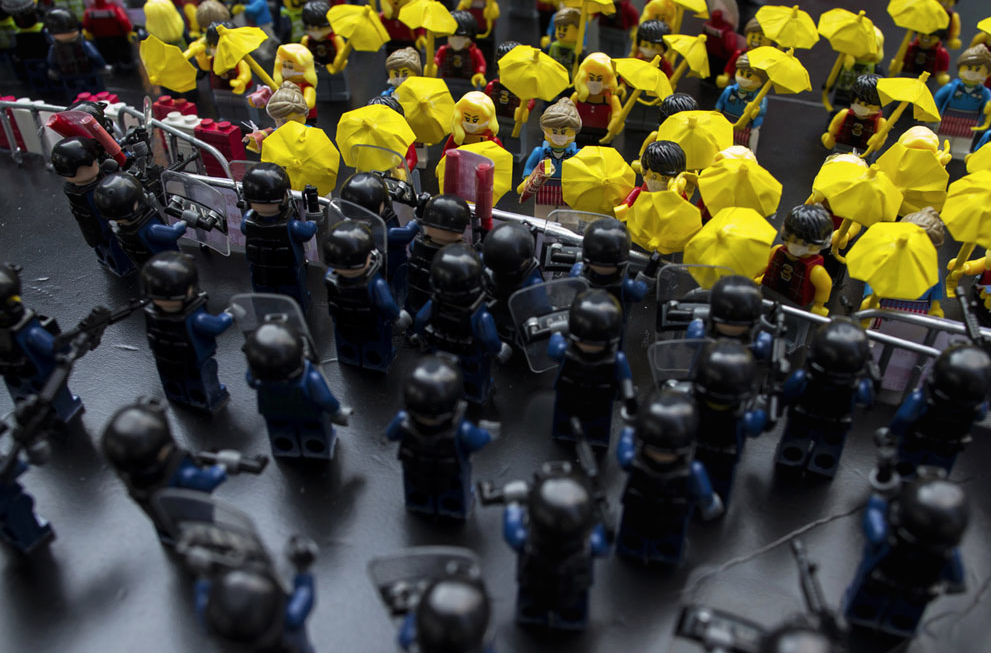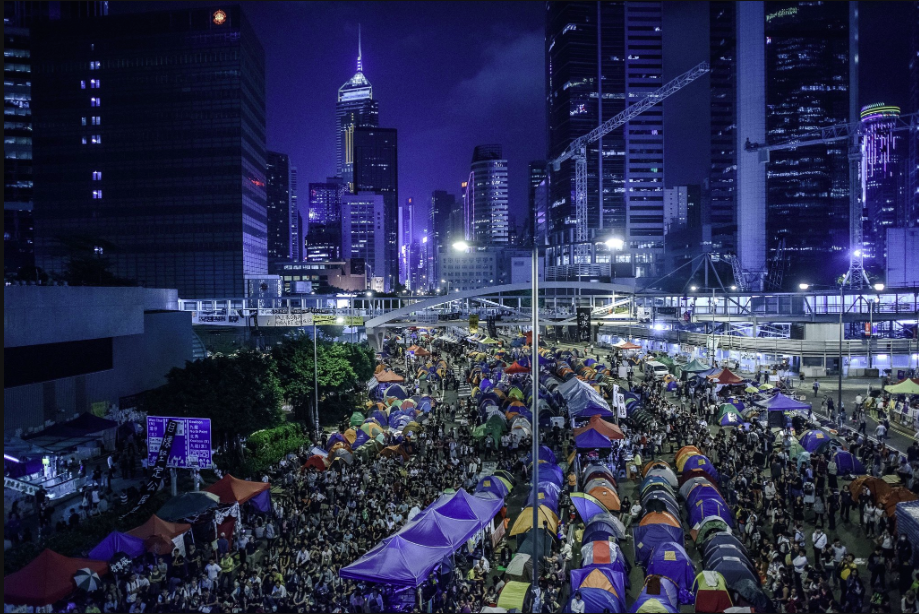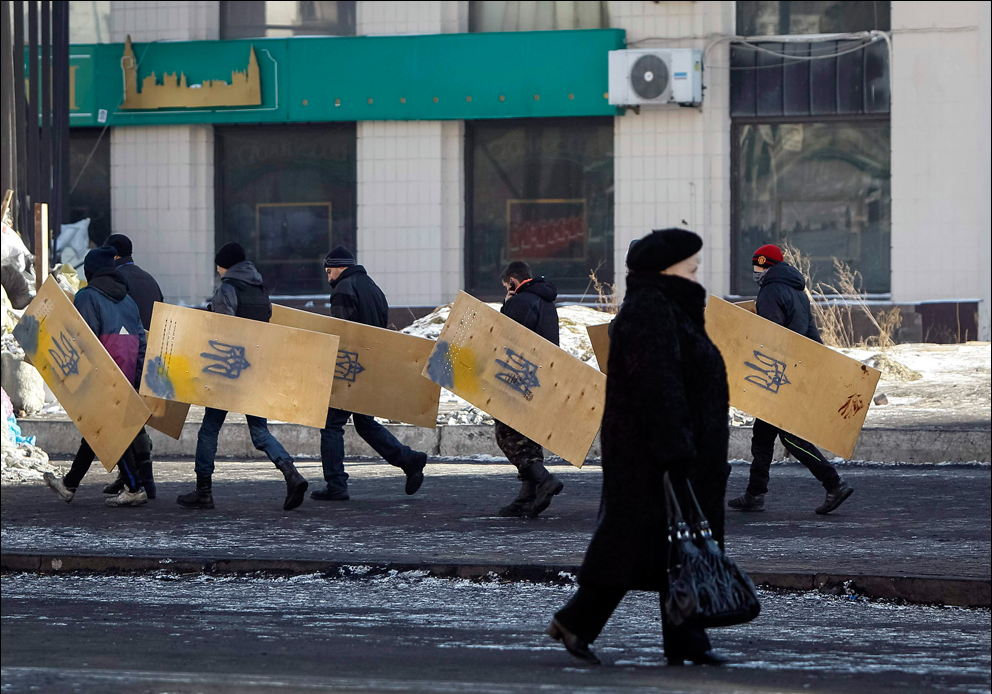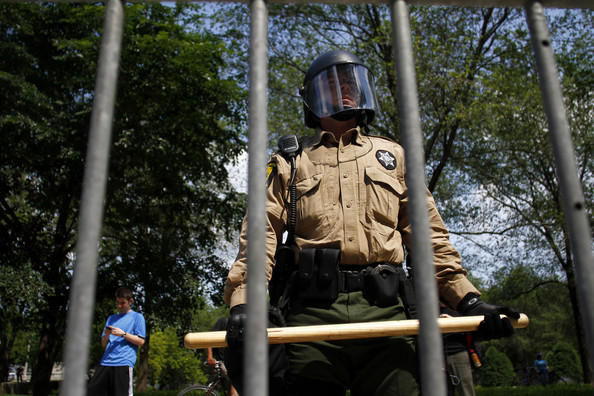Photographs of protests from around the globe abound. But whether taken in Hong Kong, the Ukraine, Greece, or almost anywhere else—including the United States—it is often difficult to discern little more than an opposition between police clad in riot gear, wielding shields, batons, and tear gas or pepper spray squaring off against scantily clad dissenters seeking to maintain their presence in a public space. Some protestors prove to be violent, to be sure, though the cause of provocation is never all that clear. But the point is that at least in recent times there appears to be little that distinguishes the unrest that is unraveling state authority almost everywhere. Or to put it differently, it seems like the legitimacy of state power is increasingly pushed to the furthest limits of authority and required to use force to sustain its primacy. Isaac Asimov has one of the main characters in his Foundation trilogy note that “violence is the last resort of the incompetent,” and the point is doubly significant when it is directed at those entrusted with the maintenance of governmental authority.
The photograph above is of a “lego” display that appeared outside of the government headquarters in Hong Kong this past week and the yellow umbrellas clearly mark it as signaling the pro-democracy protests that have dominated news coming out of China for the past month. But apart from the umbrellas that signal the protests in Hong Kong, this could be a conflict anywhere in the world, positioning a faceless state authority against a diverse population of individuals (comparatively diverse, that is, but then there are limits to what one can accomplish with lego figurines). And notice the attitude of the opposition, with the military forces cast in the darkest of tones, carefully arranged in preparation for a military style assault and “the people” dressed in brightly arrayed, ordinary clothing with no particular order to their arrangement, rather as one might expect to find a democratic populace, each moving in its own direction without actually getting in the way of the other. What is most pronounced, however, is the barely visible fence that divides one side from the other and leaves no room for negotiation or compromise. The opposition between state and citizens is stark, and Order must be regimented and maintained at any cost, even at the risk of destroying the society that the state presumably represents and is consigned to protect.
That the meme represented by this lego display (and a scene reproduced in photograph after photograph from conflicts all over the world) is so easily recognizable—even for someone who has paid no attention to the protests in Hong Kong—should alert us to the possibility that there is something larger going on here than a local battle. Of course every particular conflict is rooted in local concerns and animated by very specific objections and complaints that need to be considered, but the larger point is that increasingly the opposition between state authority and the voice of a democratic polity seems to reveal few opportunities for accommodation. And it might leave some wondering if there is room for democratic dissent anymore. It is hard not to be pessimistic.
Occasionally, however, one encounters photographs that offer a more optimistic possibility, and this overhead view of demonstrators gathered in Hong Kong’s Admiralty district might be a case in point. Like with the lego display the vantage point is
from above, though the protest site is now at a greater distance from the viewer. And what we see is both more and less. The immediate sense of opposition is neutralized (or veiled?) by the fact that we see the protest framed by the larger cityscape. The markers of difference between state and citizenry are impossible to discern or distinguish, as one would hope to be the case in a properly democratic order. All are equally cast in a natural darkness, though all are equally illuminated by streetlights and buildings (and perhaps a bit of moonlight), and so the opposition of lightness and darkness loses much of its normative force, and more it is clear that the darkness will soon return all to the light of day, if only for a bit. More important, perhaps, is that the scene marks a high modern society that blends both skyscrapers (and notice the cranes, which indicate continued construction and development) and multitudes of people who appear to be in some measure of harmony with both the city and one another. Indeed, the protest notwithstanding, there is a degree of everyday orderliness to the display, with tents and shelters dispersed through the scene and people milling about as if at a street fair. Order here does not have to concede to rigid regimentation and oppositional dissent does not necessarily have to reduce to drawing a line in the sand.
Of course, the multitudes could become outraged by continued efforts to deny their voice or the state could choose to wield force to have its way, and tragic, bloody violence could easily end up being the order of the day. The point here is not a call for a Pollyanna sensibility about the possibilities for peaceful protest and democratic governance. Rather, it is to suggest that the photographic conventions that too easily pit the state against the people in simplistic terms (as demonstrated by the meme represented by the lego display) are not the only possibility (however “real” they might be in some register), and that taking a longer view (and at some distance) sometimes allows us to imagine other ways of imagining the possibilities available to us.
Credit: Tyrone Siu/Reuters; Philippe Lopez/Agence France-Presse/Getty Images



